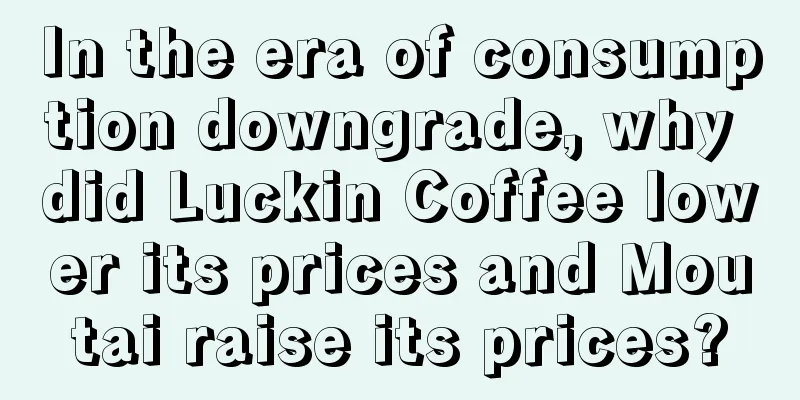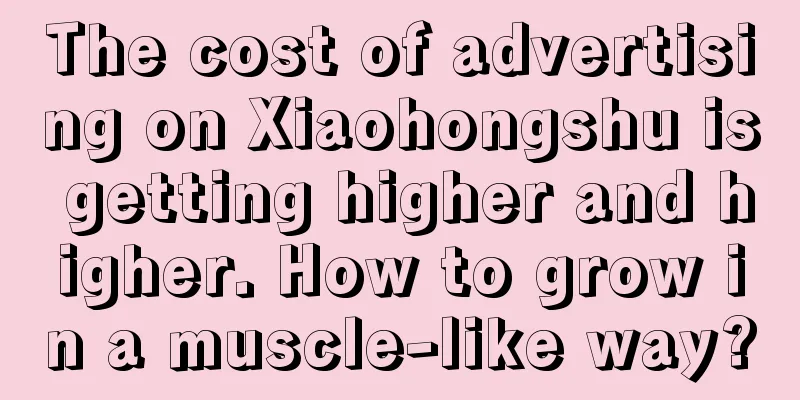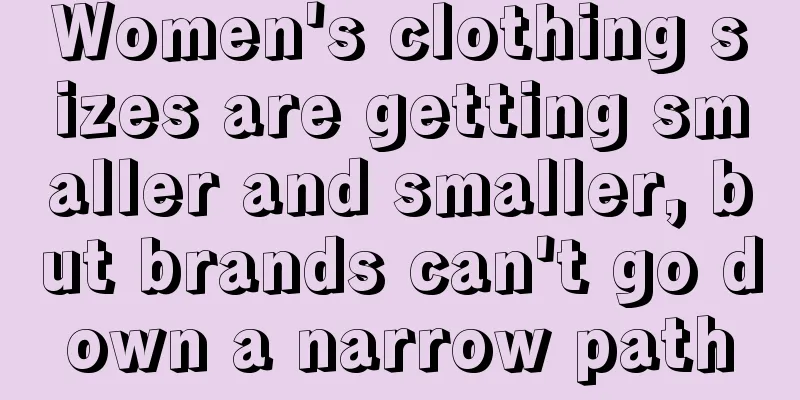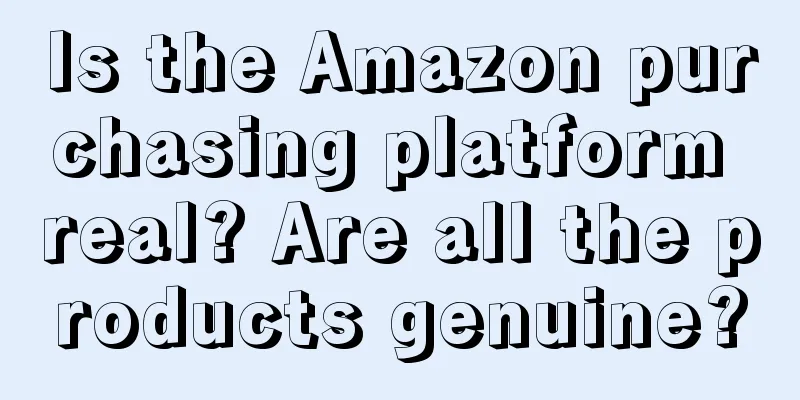In the era of consumption downgrade, why did Luckin Coffee lower its prices and Moutai raise its prices?

I bought liquid foundation for 5.9 yuan, and only went to B1B2 when I went shopping. I went against involutionary shopping… In the era of consumption downgrade, young people have a lower and lower desire to shop, and they can’t even buy on Double Eleven. Consulting firm Bain recently released a research report on the "Double 11" promotion. The survey results showed that compared with 2022, 77% (more than three-quarters) of consumers plan to reduce their consumption spending on "Double 11" this year, or maintain the same level as last year. In order to cope with consumption downgrade, many brands have begun to use the killer move of price reduction. New tea brands such as Heytea and Nayuki announced price cuts in 2022. They originally took the high-end route, but now they are taking the affordable milk tea route. Luckin Coffee, under the influence of Kudi Coffee, launched a 9.9 yuan coffee discount. Apple's official channels in China also cut prices for the first time. On October 30, Apple's JD.com flagship store offered discounts of up to 801 yuan for the iPhone 15 series, while Apple's Tmall flagship store offered coupons worth more than 500 yuan for the purchase of iPhone 15 series phones. As the end of the year approaches, six auto brands including BYD, Zeekr and Leapmotor have announced price cuts as part of the year-end price war. However, not all brands have chosen to cut prices to respond to the market. Starbucks faces fierce competition in China, but it has not responded by lowering prices. Its coffee price has long remained at more than 30 yuan per cup. Although it has not lowered prices, Starbucks' revenue remains at a good level. In the fourth quarter of fiscal year 2023, Starbucks' revenue in the Chinese market reached US$840.6 million, a year-on-year increase of 15%. In November 2023, Kweichow Moutai raised its ex-factory price against the trend, with an average price increase of about 20%. Many commentators believed that this was a manifestation of Moutai's strong brand power. In the same market environment, some brands choose to lower prices, while others choose to raise prices. So in the era of consumption downgrade, should brands lower prices to cope with the market? 1. Cost affects price, but the market determines price When it comes to product prices, many people have a misunderstanding that if the cost is low, the price should be low, and if the cost is high, the price should be high. This is not the case. The cost of the iPhone has increased, but the price has decreased. It is clear that the cost of goods does not determine the price. The price of a commodity is determined by supply and demand. In the past, when Apple released a new phone, a large number of people would rush to buy it online or line up offline, so the iPhone rarely dropped in price. Now, the situation is different. First, in an environment of consumption downgrade, people have less motivation to replace their phones. When people had money before, it was no big deal to replace a new phone. Now people are generally not that rich, and the phones they have are still usable, so they save some money and don’t replace them. Second, Apple’s competitors are getting stronger and stronger. Huawei and Xiaomi released new phones before and after the release of iPhone 15, and the market was full of praise, grabbing a lot of iPhone market share. At this time, the iPhone 15 has to choose to reduce the price to cope with it. Therefore, the price reduction of iPhone 15 is not because of lower cost, but because of insufficient market demand, that is, supply exceeds demand. Supply and demand determine commodity prices and are also the core factor in determining whether a commodity should be reduced in price. All of the following analysis is essentially based on this simplest economic law. 2. Why did Luckin Coffee lower its prices but Starbucks did not?In February 2023, Kudi Coffee launched the "Coffee Carnival in Hundred Cities and Thousands of Stores". During the event, the price of a single cup of coffee dropped to 8.8 yuan, and has maintained this level for a long time since then. Soon, Luckin Coffee announced the “Ten Thousand Stores Celebration” event on June 5, offering a discount of RMB 9.9 per cup of coffee and claiming that this was a long-term pricing strategy. The intention of Kudi Coffee in launching a cup of coffee at 8.8 yuan is obvious. As a challenger, it wants to seize Luckin's market by offering cost price or even lower price. At this time, Luckin Coffee has two choices: either keep the current price unchanged, so that the profit will be maintained, but it will lose a lot of users and market share, and the revenue will decrease; or reduce the price, which may not lose many users, but the result will be the same, the revenue will decrease, and there is an additional consequence - lower profits. So Luckin Coffee was faced with a dilemma, and ultimately it chose to lower prices. Price cuts will first bring deterrence. Luckin can reduce the profit margin of challenger Kudi by cutting prices, especially if Kudi cannot bear long-term low or even negative profit margins. Luckin claims that 9.9 yuan is a long-term strategy, which is to tell Kudi that if you keep low prices, you will never make money. If Kudi realizes the considerations behind Luckin's response and that it cannot afford long-term low or even negative profits, it will not continue to keep the price low. The market will gradually return to normal prices. For a brand like Luckin Coffee, users are its core value, and long-term operations can increase users' LTV. Therefore, for it, although it may maintain a high profit margin by not lowering prices, the losses caused by user churn may be greater in the long run. Luckin Coffee had no choice but to cut prices in the face of Cody's challenge, because price adjustments after a price cut would not be a short-term process and might affect the brand value. However, in order to maintain users and market share and to deter Cody, it had to cut prices. As a coffee brand, Starbucks did not lower its prices. The main reason is that its positioning and user base are different from Luckin Coffee and Coodi. Some people say that the reason why people still go to Starbucks even though the coffee has not been lowered is that its core differentiation is its chairs. Behind this statement actually represents the difference in the products provided by Starbucks. Compared with Luckin Coffee and Coodi, Starbucks provides not only coffee but also covered space. This is the unique value of its "third space". From the perspective of supply and demand, Starbucks users are not greatly affected by price cuts of competing products. Most people who used to go to Starbucks still want to go to Starbucks because they go there to rest, work, or have a small gathering, which most Luckin stores cannot do. Another large number of Starbucks customers are its loyal fans. They are willing to pay a premium for this brand and spend more money. For them, the green mermaid of Starbucks is the reason for purchase. 3. Why did Moutai increase in price?Many people call Moutai’s price increase strategy a counter-trend price increase, because with consumption downgrade, most people have reduced their spending. If the price is raised at this time, won’t no one buy it? This is true for most brands, but it is completely different for luxury goods like Moutai. The logic of luxury goods is that the worse the economy is, the higher the prices will be. For example, big brands like LV and GUCCI have also frequently increased their prices in recent years. The logic behind the price increase of luxury goods is actually very clear. When the economy is bad, a large number of middle-class people who used to have enough money to buy luxury goods no longer buy luxury goods, while the wealthy people who used to buy luxury goods are not affected and continue to buy them. At this time, the best option is to use price increases to eliminate those middle-class people who no longer buy luxury goods, and to obtain higher income and profits from the wealthy people who have always bought luxury goods. For example, the middle class who used to drink a bottle of Moutai occasionally have now tightened their purse strings and drink cheap wine, but the wealthy who used to drink Moutai all year round will never replace Moutai with Erguotou. If the price of luxury products like Moutai is reduced, it will cause some problems. First of all, price drives the perception of value. If Moutai lowers its prices, it would be like telling everyone: "In fact, the high prices of our wine are all exaggerated." The sense of value will plummet. Secondly, if Moutai returns to its high price one day, new customers who come because of the low price will still not be able to afford it, so new customers brought in do not create future value-added income. Finally, if old customers are used to the benefits of discounts, once the price of Moutai goes up, they may shake their heads and leave. Therefore, luxury brands must resist the temptation to win the market through price wars. 4. Use branding rather than price cuts to drive market demandResponding to market changes by lowering prices is an option, but not the best one. In February 2000, several scholars from the University of South Australia, Casey Hammond, Andrew Ellenberg and Stephen Long, analyzed 200 promotional activities of 150 big brands and 30 categories, and concluded that although price reduction promotions can change sales, they will return to the starting point in a short time. Such promotions cannot attract new customers for the brand, so they do not have long-term benefits. For a well-known brand, a price cut may create a peak in revenue in the short term, provided that competitors do not make big moves (but this will shrink your profits). This kind of price cut usually only attracts customers who don't care much about the brand and only care about the price. They are always particularly sensitive to bargains. But it's like giving them a little sweetener, and when there is no discount, they will never come back. A better option is to use branding to maintain and increase demand, just like Starbucks does, making consumers willing to pay a higher price when they see the green mermaid. Consumers will only pay a premium for brands, not products. If you don't have a brand, but only products, people will only be willing to pay for the cost when buying your products. The more people who like your brand, the higher your corporate value. Once people fall in love with a brand and continue to pay a premium for it, the brand will occupy the consumer's mind. In this way, when consumers are faced with a wide range of products, they will go straight to the brands they prefer, even if competing products are cheaper. Such people are loyal consumers of the brand. To them, the brand is unique, different and special, which is actually the essence of love. Author: Xunkong WeChat Official Account: Xunkong’s Marketing Revelation |
<<: Explosiveness and crisis, where will the future of live streaming go?
>>: A new marketing strategy - "receipt literature"
Recommend
Faced with a phenomenon-driven node, how should brands create hits and leverage the momentum to break out of the circle?
How can we use the current hot spots and popular I...
Can I open a personal store? What are the requirements?
The rise of cross-border e-commerce has given many...
The number of followers increased by 4 million in 7 days. Who created “Wa Ya Wa”?
"Dig and dig in the little garden, plant litt...
Pharmacy Operation Trends and Growth
In this post-epidemic era, how to seize favorable ...
What are the types of Amazon keywords? How to find core keywords?
On the Amazon platform, merchants generally need t...
A few words brought in 70 million yuan worth of goods, and the middle-aged man couldn't get out of the live broadcast room of the "female boss"
In the fierce competition of live e-commerce, the ...
Why has Xiaomi Auto been slow to announce its price?
Since Xiaomi Auto held its technical conference, t...
Heytea City Refrigerator Magnets have become “social currency”, how much potential does the local cultural business have?
Recently, everyone has heard about the popularity ...
Is it difficult to receive orders from Alibaba International Station? Should we still open an international station?
Everyone should know Alibaba. When you are doing c...
Xiaohongshu 7 types of business operation strategy V1.0
If you are confused and lost about the marketing o...
How are Amazon ratings calculated? What is a high rating?
Amazon store ratings refer to the process by which...
6 steps to turn Xiaohongshu into an efficient new private domain
This article first briefly introduces Xiaohongshu&...
Is there any certification required to sell children's clothing on Amazon? What are the tips for opening a store?
Basically all kinds of products are sold on Amazon...
Introduction to Shopee live broadcast support activities at various sites for Double 12
Shopee live broadcast support activities at variou...
What is Amazon Alexa? Can Amazon Alexa be used in China?
Now Alexa is more than just a simple voice assista...









